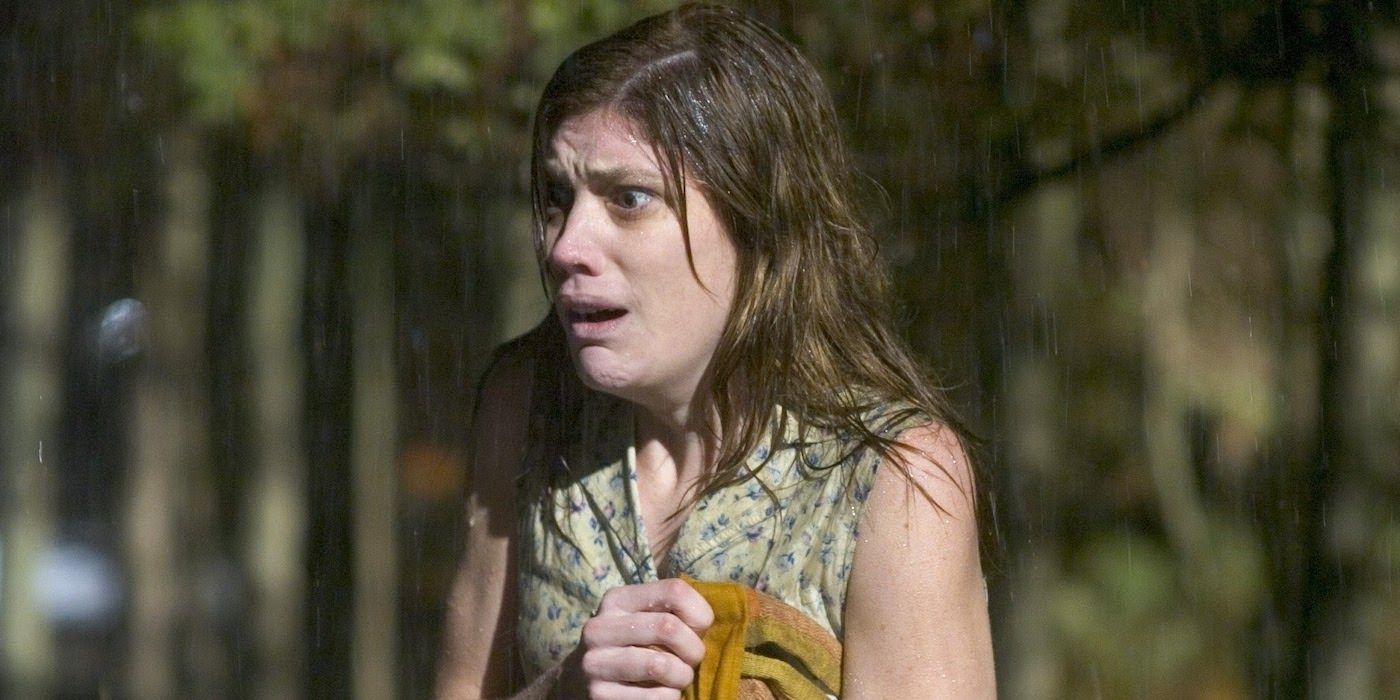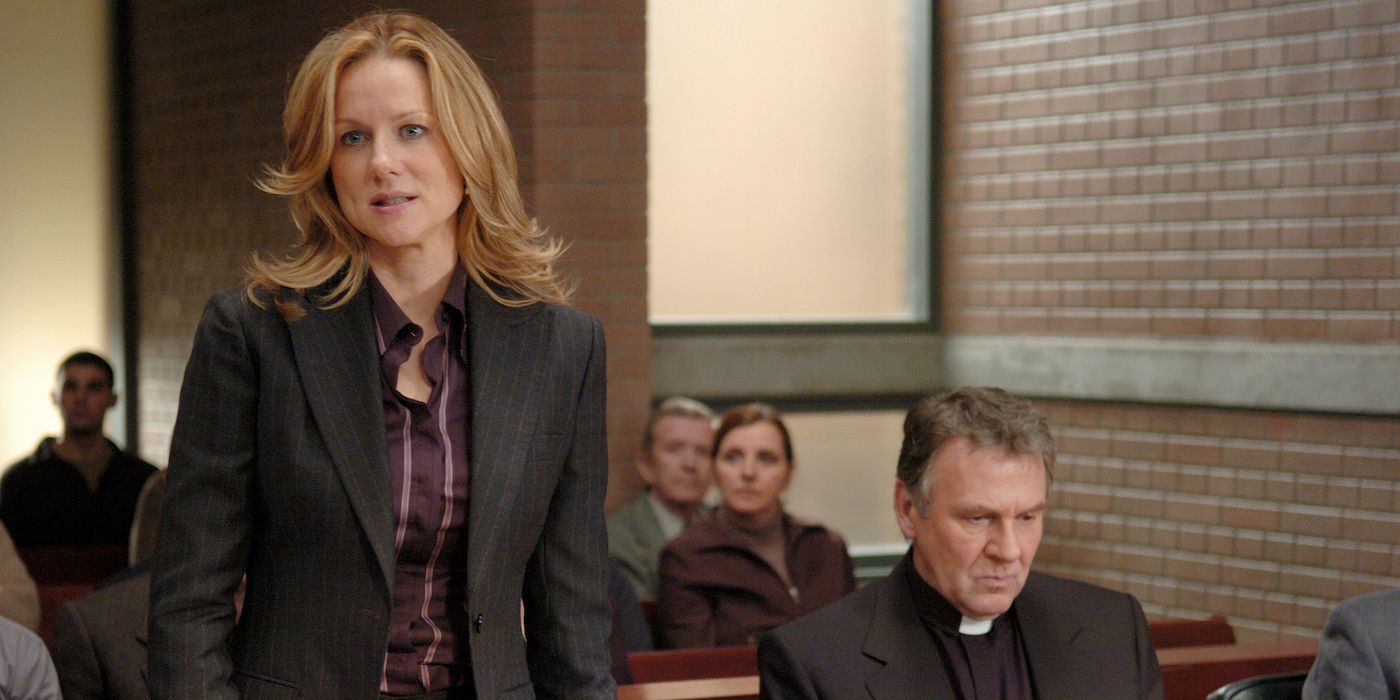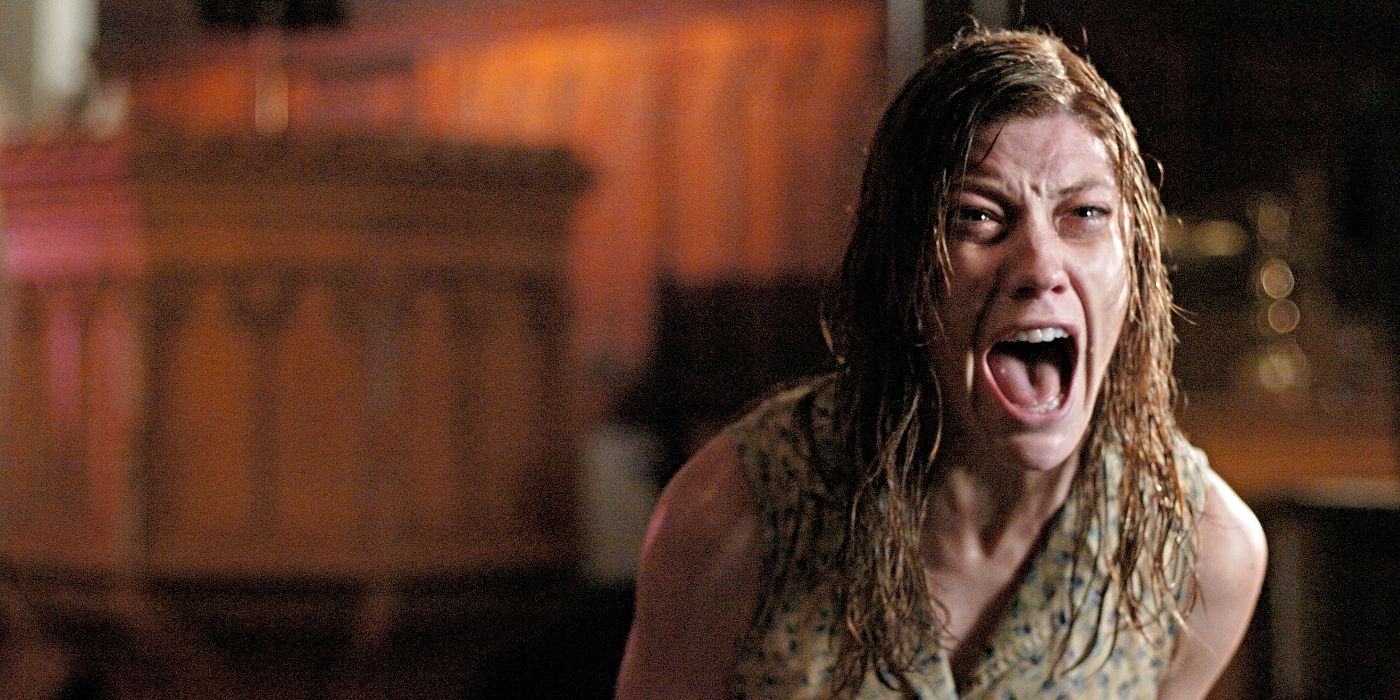Editor's Note: The following contains material that readers may find disturbing.
The Big Picture
- Horror films "Based on a True Story" are terrifying because they remind us that what happened to someone else could happen to us too.
- The Exorcism of Emily Rose may be an average film, but the real story of Anneliese Michel is anything but average.
- Anneliese's possession included horrifying symptoms and required numerous exorcism sessions before her tragic death, leading to a trial for negligent homicide.
There is nothing more frightening than a horror film that touts itself as being "Based on a True Story." A fictional horror film can be left at the theater, but one based on real-life events means that if it happened to someone else, it could happen to you. This is also true of horror films where "based on" is to be interpreted as inspired by a true story, in that even if the events in the film don't quite match the reality, there is still a sliver of truth in there. It's in this category that The Exorcism of Emily Rose falls.
The film sees lawyer Erin Bruner (Laura Linney) defending Father Richard Moore (Tom Wilkinson), who has been charged with negligent homicide after attempting an exorcism on Emily Rose (Jennifer Carpenter), a 19-year-old student. While Carpenter received acclaim for her role as Emily (with director Scott Derrickson citing her ability not only to contort her body but her face to such a degree that the film almost had an R rating), the film itself is average at best. The same can not be said about the real story behind The Exorcism of Emily Rose. No, the tale of 23-year-old Anneliese Michel is decidedly anything but average.
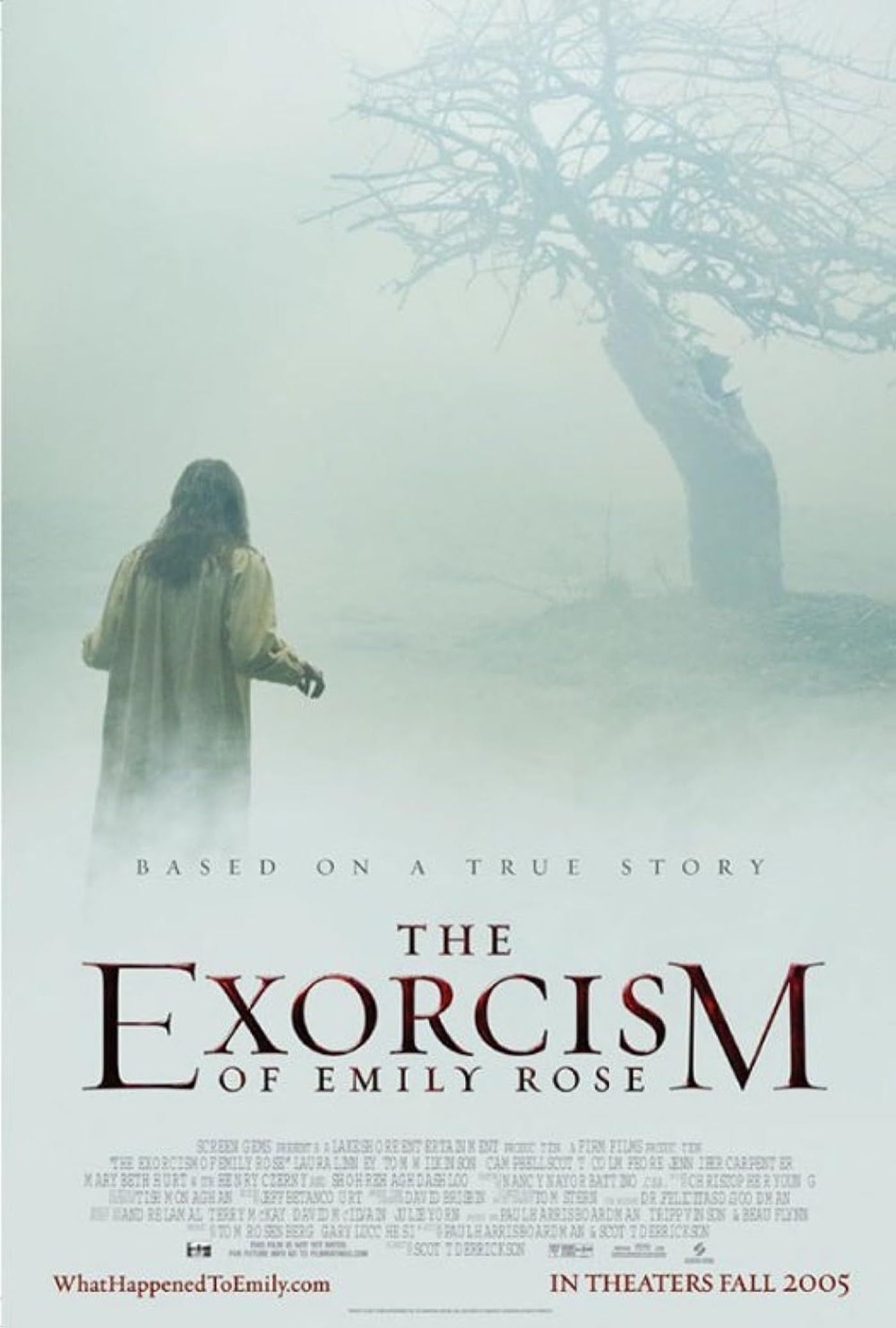
The Exorcism of Emily Rose
A lawyer takes on a negligent homicide case involving a priest who performed an exorcism on a young girl.
- Release Date
- September 9, 2005
- Director
- Scott Derrickson
- Cast
- Laura Linney , Tom Wilkinson , Campbell Scott , Jennifer Carpenter , Colm Feore , Joshua Close
- Main Genre
- Crime
How Did Anneliese Michel Inspire 'The Exorcism of Emily Rose'?
The Michels, a deeply religious family, lived in Klingenberg, a small town in Bavaria, West Germany. The father, a sawmill operator named Joseph, had once considered becoming a priest, and there were no less than three nuns in the extended family. In 1948, Anneliese's mother, Anna, gave birth to an illegitimate daughter, Martha. This was so disgraceful that when Anna and Joseph were married, Anna was forced to wear a black veil during the ceremony. From that point on, Anna insisted that she and the family atone for those sins and the sins of others. This was the world that Anneliese was born into in 1952.
Growing up, Anneliese was, like the others, encouraged to be overtly devout as a form of penance for the sins of the family that predated her. Mass was twice a week, and the girls' time was largely spent indoors praying in lieu of playing with other children. When Martha died at the age of eight, it added additional pressure for the young Anneliese to be that much more repentant, even made to sleep on the stone floor to atone for the sins of the drug addicts at the train station. The punishment at the hands of her zealot parents resulted in Anneliese, a well-liked student with a penchant for languages, developing neuroses triggered by religious icons. It didn't help matters that Anneliese was a sickly child, having had measles, mumps, and scarlet fever at a young age, leading to additional physical and psychological ailments that plagued her into her teens.
Was Anneliese Michel Really Possessed?
At the age of 16, Anneliese blacked out at school, with friends reporting that she was in a trance-like state for a minute or two. Later that evening, Anneliese woke up from her sleep, saying that she had a "heavy feeling on her body," and had wet the bed. A similar incident the following year brought Anneliese to a local doctor. As reported by The Sun, neither the doctor nor the neurologist found anything wrong with her, but tuberculosis would send her to the hospital in February 1970. During the hospital stay, Anneliese confessed to seeing colors, hearing sounds, and experiencing euphoria while saying a rosary, but the strange experience didn't seem to warrant any deeper investigation. She was, however, diagnosed with grand mal epilepsy due to intermittent convulsions. Soon, the experiences Anneliese had while saying a rosary turned to evil hallucinations, followed by severe depression and thoughts of suicide, encouraged by voices in her head telling her she was damned. And that was just the beginning.
According to The Telegraph, Anneliese would be performing 600 genuflections in a day, leading to damage to her knee ligaments. She then barked like a dog for two straight days while hiding under a table. Anneliese reportedly lapped her own urine off the floor, ate spiders, coal, and a dead bird's head, and screamed for hours on end. Her family wanted to bring Anneliese in for further medical tests, but she insisted on an exorcism, and after two failed requests, a third was authorized by Bishop Josef Stangl. Father Arnold Renz was appointed by the Bishop to perform the exorcism, aided by Father Ernst Alt, with the first rite taking place on September 24, 1975. The exorcisms, most of which were recorded, revealed numerous demons in Anneliese seeking control: Lucifer, Cain, Adolf Hitler, Judas Iscariot, Nero, and others. The exorcisms continued, with one-hour-long sessions held secretly in the bedroom of her parent's house, where Anneliese was often in need of restraint, either by holding her down or chaining her to a chair.
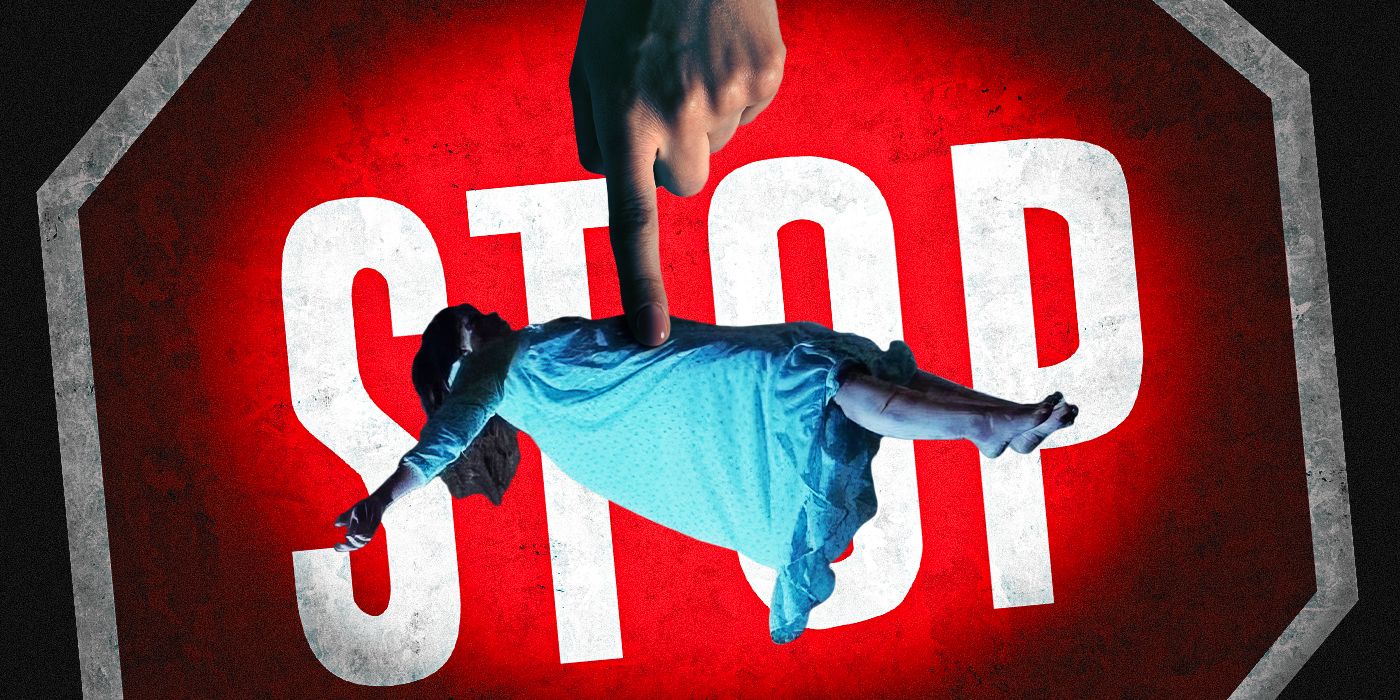
The Power of Christ Compels You to Finally End the Exorcist Franchise
Someone throw this horror series out the window, please!The recordings during these sessions are, as The Telegraph describes them, terrifying listening. Obscenities are screamed, a series of throaty gurgles mixed with inhuman growling can be heard, as well as the demons each poetically lamenting the horrors of Hell. 11 months before passing away, Anneliese stopped taking her medication by order of the priests, who were wholeheartedly convinced that what was plaguing Anneliese was spiritual, not medical. Her body started deteriorating from malnourishment and dehydration. Barely recognizable, Anneliese became covered with bruises and bedsores, her hair began falling out, her teeth were fractured, and she had wasted away to a mere 68 pounds. Finally, after nearly 70 exorcism sessions, Anneliese passed away on July 1st, 1976. According to The Sun, the battle for Anneliese's soul was won, with the priests claiming to have seen stigmata (marks said to represent where Jesus was nailed to the cross) on her hands and feet, taken as a sign she had been freed.
Why Was There a Trial for Anneliese Michel's Death?
The two priests and both of Anneliese's parents were charged with negligent homicide, with the trial beginning on March 30th, 1978. The recordings were played for the three-judge panel, and along with Anneliese's own insistence on being possessed, became key points for the defense. The prosecution, on the other hand, testified that Anneliese's death could be attributed to epilepsy, mental disorders, and her extremely religious upbringing, which Professor Hans Sattes of Wuertzburg University, chalked up to "a spiritual sickness and heavy psychic disturbance," according to The Washington Post. It was faith versus fact, and ultimately fact won out.
The four were found guilty but were given lenience, sentenced only to time served, and three months probation. The trial spurred German bishops to petition Rome in 1984, asking for a review of the exorcism rite. The recommendations made by the bishops were not adopted at the time, but in 1999, The Telegraph notes that the Vatican did publish a revised exorcism rite, the first since the 17th century. It also introduced a revision where in order for priests to become exorcists, they must undergo medical training. Although never stated publicly, it would seem to speak directly to Anneliese's case, the one positive to have arisen out of her anguish.
Anneliese Michel's Family Stands by Her Exorcism
Despite this, Anneliese, even in death, couldn't escape from the extremely stifling religious autocracy that filled her life. Her parents buried her next to Martha at the outer edges of the cemetery, where illegitimate children and souls lost to suicide are relegated. After a nun told the parents that she had a vision that Anneliese's body was still intact, proof of her possession, they exhumed the body in February 1978 (it wasn't — the body had decayed naturally). Even as recently as a 2013 interview in The Telegraph, Anna still insists that the exorcism was the right course of action, despite her daughter's tragic death as she, too, claims to have seen the same marks that the priests did. "I know that we did the right thing because I saw the sign of Christ in her hands. She was bearing stigmata and that was a sign from God that we should exorcise the demons. She died to save other lost souls, to atone for their sins."
The Exorcism of Emily Rose does take some artistic liberties, including Americanizing the story of Anneliese Michel, but does retain the faith-against-fact story that made the original trial so fascinating. As for whether Anneliese was actually possessed or not, it's a question that may never truly be answered, but the deeper you read into her tragic story, the more it becomes evident that sometimes fact backs up faith.
The Exorcism of Emily Rose is available to rent on AppleTV+

